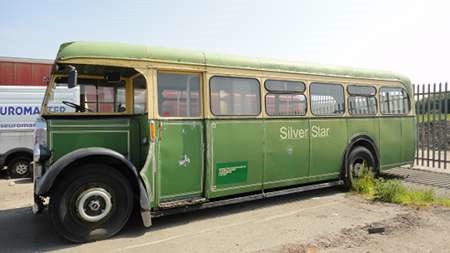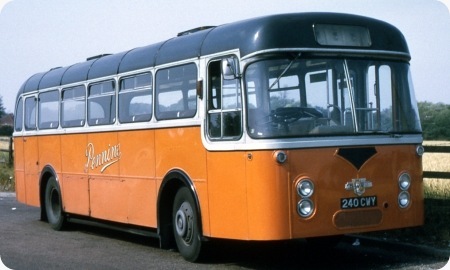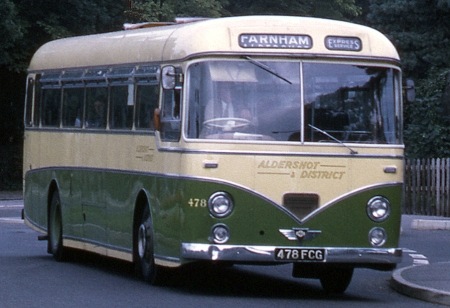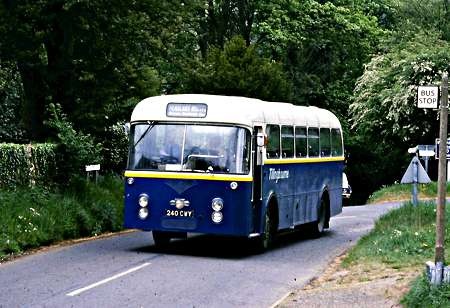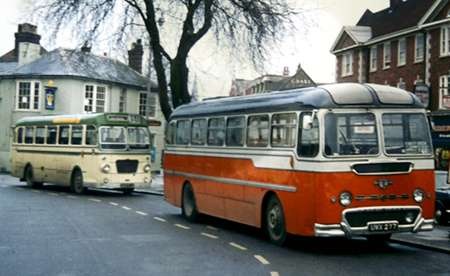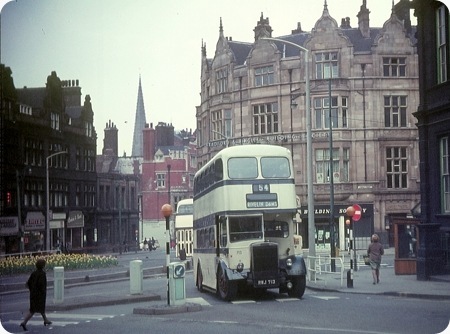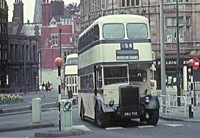Blackburn Corporation – Leyland PS1 – BCB 340/EAS 956 – 7
Blackburn Corporation Transport
1948
Leyland Tiger PS1
Crossley B32F
Blackburn Corporation Transports roots go back to the first services in 1881, the trams, unusually, being wholly steam-hauled for the whole period, with corporation takeover and subsequent electrification in 1901.
Bus services started in 1929. Tramway closures started in 1935, but the system’s complete demise was delayed by the unpleasantness between 1939 and 1945; finally closing in 1949.
In March 1948, BCT took delivery of five single-deck Leyland PS1’s, with Crossley B32F bodies, the second half of an order placed in 1947. This second batch were numbered 6-10 (BCB 339-343). They were delivered with the typical Crossley body design of two shallower rear windows. At some stage, these four windows were altered to resemble the others. They also had painted radiators, later becoming chrome. Clayton Dewandre heaters were a fitment, and unusually, for a bus, the front entrance has a recessed sliding door. You can see the emergency exit in the rear of the bus. 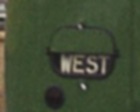
The buses spent most of their lives on the so-called East/West route, merely bearing the words EAST or WEST on their blinds. Quaintly, the rear ‘blind’ was a very small window box low down on the rear nearside, with a flap hinged across the centre. The flap moved up or down to expose either ‘EAST’ or ‘WEST’, printed on short vehicle registration plates – crude, but effective!
The batch was finally withdrawn from service between 1964 and 1969, No. 7 being withdrawn on 28/2/1967. However, it remained in the fleet, eventually as a heritage vehicle, being transferred to the company’s coaching arm, Blackburn Coachways. It was very active in the preservation scene in the 70’s, 80’s and 90’s.
Some time after 1998, she was re-registered EAS 956. (The BCB 340 registration was transferred, firstly, to a Volvo B10M coach in the Blackburn Transport fleet, in 2002; then going onto East Lancs-bodied Dennis Trident double decker No.1, which carried the mark, until being sold to Blackpool in 2007). 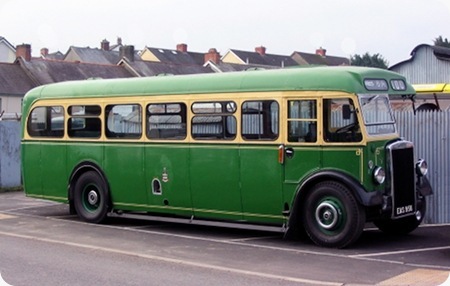
Copyright Chris Hebbron
In 2004, the PS1 was sold and purchased by keen bus enthusiast, Merddyn Jones, of Jones International Coaches of Llandeilo, who mechanically restored it. My photo was taken in 2007, outside Jones’s garage. Imagine how surprised I was to find a Blackburn bus, perchance, in rural Wales!
In 2008, the bus was acquired by Silver Star Holidays, of Caernafon. It earns its keep, together with an impeccable 1950 Burlingham-bodied AEC Regal III (LPT 328) , on vintage coach tours/weddings etc. In a photo I’ve seen, dated last January, it was looking very smart, apparently having had a repaint.
A sister vehicle, No.8 (BCB 341) has also been preserved.
A keen Leyland aficionado, Merddyn now owns something bigger, an ex-Southdown ‘Queen Mary’.
Photograph and Copy contributed by Chris Hebbron (with thanks to Duncan Holden and Merddyn Jones).
26/09/11 – 06:23
7 didn’t remain with Blackburn after withdrawal. It went into private preservation in the Manchester area. I recall it appearing nicely restored in the early eighties and it was still with an owner in Stockport at that time. Blackburn only bought it back later.
It is worth crediting Duncan Holden’s site as it is an excellent example of what can be done on one operator. If you like Blackburn’s fleet allow yourself plenty of time to look at it //www.olivegreenandivory.co.uk
David Beilby
04/10/11 – 17:14
Thanks, David, for filling in a gap of which I wasn’t aware.
Chris Hebbron
27/10/11 – 07:29
Thank you for the correction to the history of Blackburn 7 (BCB 340).
In 1968 – 7 was sold to a dealer along with most of the remaining batch and was expected to be scrapped, but she was sold to a youth band and toured Europe.
Laid up after 1973, I and three friends rescued and purchased 7 in 1976 at the eleventh hour for its scrap value, in a semi derelict, vandalised condition, from a Stockport group, with a ceased frost damaged engine and we spent several years rebuilding it to a very high standard. We rallied it extensively from 1977 to 1992 when we sold it back to Blackburn, who had hired it from us occasionally. Blackburn did nothing to it and sold it on to Jones. Its ivory/off white colour has been repainted in the wrong shade, and applied around the cab, which is incorrect. The green and lining out is as we applied it with varnish in 1985. It had had a full mechanical rebuild in the 1980’s including the engine. We were very fond of it and it is nice to see it still looking good and earning its keep, which is exactly how we wanted it to be. I still have most of its history and some other information. A lovely bus to own and drive!
Steve Heginbotham
27/10/11 – 13:58
Thx for filling in some more detail. Your tale is so typical of the trials and tribulations which vehicles (and restorers) go through and the wonder is how some vehicles ever survive them! Have you been involved in any more restorations?
Chris Hebbron
08/11/11 – 06:45
Yes, both me and my Brother-in-law where involved in the very early stages of the restoration of Manchester tram 765 when it was kept in Birchfields Road depot. I also did some dismantling work on a similar tram to Stockport 5 and the parts (to equip 5) were kept in our house for several years. I also restored cars, motorcycles, and 3 AFS vehicles. Alas I now only have two vintage motorcycles and devote my spare time to compiling books on transport. We went to Blackburn Transport in 1977 for a crash course in vehicle body restoration and professional painting skills,which is why 7 still looks so good. 8 layers of hand applied, top quality paint, perfectly matched and applied with brushes at £30 each in those days!!
We also considered buying sister bus number 8 when it was kept at Burtonwood Airfield, and then almost completely intact.
Steve Heginbotham
09/11/11 – 06:15
Phew, Steve, someone should give you a medal for your efforts, although I know you’d argue it was a labour of love! It’s certainly a record to be proud of, anyway!
Chris Hebbron
01/12/12 – 09:18
The Olive Green & Ivory website mentioned above has been having problems with images being freely filched and used on the web by others. It was taken down completely, but in response to many requests a small part of it has now been reinstated, with anti-theft watermarking.
Please help the webmaster by following the link to the site, looking at the quality of the few pics that have been reinstated, and leaving your (helpful and productive, please) comments. www.olivegreenandivory.co.uk
Tony
07/02/13 – 14:27
This is a question for Steve Heginbotham, I’m trying to trace the sister bus BCB 341 – I am unable to contact ‘Queensbury Old Farts Club’ as their email won’t receive and they are the last know owners. Can you help? Or can anybody else help? Please??
Rachel
07/02/13 – 16:48
Classic Bus website shows BCB 341 vehicle now owned by Mr Young in Faversham but that was in 2010
Blackburn 8, PS1 {472994} / Crossley B32F, 1948, BCB 341, North West Museum of Transport 2005. To Beeby, Huddersfield 10/06. Queensbury Old Farts Motor Club, Bradford 2007, but restoration stalled. Sold on eBay 10/09 to Young, Faversham. Major work underway 2010.
Ken Jones
11/02/13 – 06:58
Thanks Ken – that’s as far as I got with her too – does anyone know who Mr Young is? or even better how to contact him? Many thanks.
Rachel
25/11/15 – 07:14
Remember travelling on these as a kid, They were used to transport us from the Tech & Grammar School in the centre of town to the baths at Belper Street for swimming lessons as well as the regular East Park Drive and West Park Drive services which ran either side of the Corporation Park.
Bernie Dickinson
06/06/16 – 06:40
Sadly, I have now found number 7 stored in the open, and out of use for at least three years in the corrosive sea air of the North Wales coast, after the owning company folded in 2013. Now in a semi derelict state, rotting away and requiring major work to put right, this previously immaculately restored, very well kept and much loved and rare bus has been very neglected and is likely doomed for scrap.
Steve Heginbotham
16/09/19 – 06:22
I have purchased Blackburn Leyland PS1 number 7 for the second time and will restore her again. In a very poor state and requiring a total rebuild. I hope to have her back up to scratch by 2021.
Steve Heginbotham
18/09/19 – 07:22
You’re a real stickler for punishment, Steve, but good luck with your task.
It seems so long that I saw her in Llandeilo, in 2007. Anyone know the situation with No.8?
Chris Hebbron
23/09/19 – 07:10
Thanks for words of encouragement Chris.
Number 8 is still on DVLA records but it’s not been seen for decades.
Last noted in Faversham 2008.
Steve Heginbotham
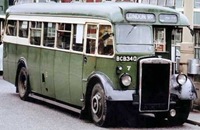 Vehicle reminder shot for this posting
Vehicle reminder shot for this posting
20/12/20 – 06:48
Blackburn 7 is currently in my shed not owned by me but having just been lined out and emblems applied. Understand going back to earning it’s keep in 2021.
Roger Burdett
Quick links to the - Comments Page - Contact Page - Home Page

